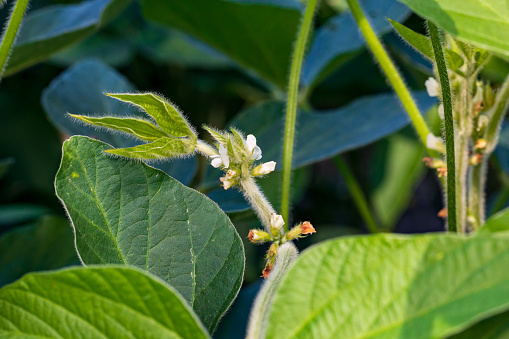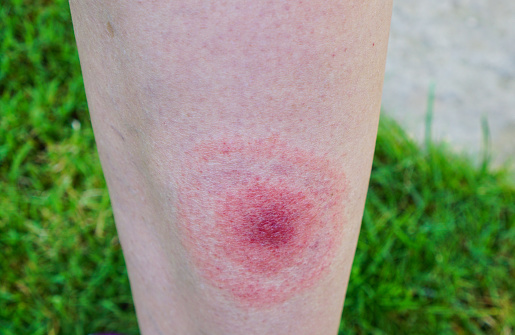How to Prevent Common Plant Diseases
Black spot
The black spot flower disease is a fungus that develops on plants in the spring, when the weather is warm and wet. This disease usually starts as tiny black spots on the leaves, but it can grow into yellow rings, which eventually cause the entire plant to die. Fortunately, there are ways to prevent it.
Black spot affects all types of roses, although some cultivars are more resistant than others. The most resistant are floribundas, shrub roses, and climbing roses. Other varieties are less resistant, such as miniature, hybrid tea, and grandiflora roses. Plants with dense foliage or an open canopy are more likely to be susceptible to the disease.
The fungus lives for the winter in the infected leaves and canes. The spores that are released by the pathogen need seven hours of wetness to germinate. Within three to 16 days, symptoms can be observed. After that, mature conidia form and begin the next cycle. The conidia are colorless, two-celled fungi. The fungus thrives in moist conditions and in temperatures between 65 and 75 degrees Fahrenheit.
Plants with black spot disease usually show a round black spot, about half an inch in diameter. The surrounding leaf tissue will turn yellow. The leaves may drop prematurely. Often, the disease starts on the lower leaves and continues upward. If the disease is not treated, it will overwinter in fallen leaves. To prevent the disease, make sure to feed your plants regularly.
Powdery mildew
A plant disease known as powdery mildew affects the foliage, stems and flowers of many plant types. Infected leaves turn brown or yellow and typically fall off of the stems, weakening the plant. Infested plants often include annual flowers, including roses, lilacs and garden phlox. The disease can also affect trees, such as maple and oak trees, as well as vegetables and fruit.
The disease is spread by fungi that grow on the surface of the plant’s leaf. They reproduce by releasing conidia or spores, which are dispersed by wind and splashing rain. The spores survive the winter attached to plant parts and debris. When the temperatures rise in spring, the fungi reproduce and spread.
Fungicides can be used to control powdery mildew on the affected plants. However, you should not use them on ornamental plants. This is because the fungicides contain too much nitrogen, which can harm the plant. Moreover, fungicides should be used only on plants that are of high value. To be effective, the fungicide should be applied on the healthy green tissue before infection begins. After treatment, inspect the plants thoroughly to make sure the powdery mildew is not damaging healthy parts of the plant.
A good way to combat this disease is to plant healthy plants in the right locations. Proper spacing will increase air circulation around the plants. In addition, plant debris should be removed in the fall. And whenever you find symptomatic leaves, you should remove them and place them in a plastic bag for later use. Moreover, you can use “biorational” compounds such as neem oil and sulfur. However, you must always check the label to ensure the chemicals do not harm the plant.
Gray mold
Gray mold and flower disease can be a real nuisance. It’s a fungus that attacks the petals of flowers, and can spread to many plants. This particular disease is caused by a fungus called Botrytis cinerea. It affects almost any type of floral crop, and can be a big economic problem. To help prevent gray mold and flower disease, keep plants clean and dry.
Symptoms of gray mold and flower disease vary, depending on the host plant, environmental conditions, and plant growth stage. The fungus usually attacks dead and soft tissues, but can also spread to stronger tissues. Symptoms may include leaf spots, flower blights, stem cankers, and crown rot. Gray mold may even cause seedlings and young shoots to collapse.
The fungus’s optimum temperature for spore germination is 72-77degF. The fungus can also grow and sporulate on wounds. The newly produced spores can also infect other plants in a greenhouse. It can be a post-harvest problem, especially on cutting stubs.
While gray mold is difficult to control, there are cultural treatments that can effectively combat it. One such technique involves removing any infected plant material. This will reduce the source of inoculum and minimize the chances of infecting other plants. Another way to prevent gray mold is to control environmental conditions. This fungus lives on dead plant material from the previous season and spreads its spores by wind, splashing water, and human activity.
Botrytis blight
Plants can be affected by Botrytis blight, a disease that causes discoloration and wilting of flowers. This disease starts on the outer petals and progresses to the inner ones. The disease can also infect leaves. Its symptoms are brown lesions and masses of gray spores.
Plants can become affected by Botrytis blight at any time, including their early growth stages. The fungus feeds on aging tissue and tender new growth. This is why aging flowers are particularly susceptible to this disease. As the disease progresses, it can lead to entire branches wilting.
The symptoms of Botrytis blight include fuzzy gray mold on flowers and leaves. These moldy spots cause the flowers to die. The infection can spread rapidly from one flower to another. It can also wreak havoc on other parts of a plant, causing fruit and vegetables to decay. Botrytis spores are carried by wind or splashing water. During the winter, they overgrow on the plant. The spores can infect the tissue of a flower or a plant by releasing a spore.
The symptoms of Botrytis blight are similar to those of a bacterial infection. The disease begins with a fungus on a flower’s petals. The infected tissue supplies the mycelium with a food source. In some cases, the fungus can penetrate green tissue directly.
Rotting Camellias
Rotting Camellias are caused by a fungus called Phytophthora cinnamomi, which attacks the roots of plants in a wide variety of environments. Symptoms of this disease include leaf yellowing, withering, and branch dieback. The plant can die within a season, or it can struggle for several years. This disease can be prevented by planting camellias in well-drained soil.
The problem is often aggravated by hot, dry, and stressful weather. It is important to remember that root rot is not treatable and the best way to prevent it is to plant camellias in the proper location with good drainage. However, this is not always an option. If you can’t get rid of rot, you can try other measures to help your camellia.
In some cases, the disease may be a symptom of another problem. This condition affects the plant’s leaves, which develop brown ‘burnt’ spots on the leaf surface. In some cases, the affected leaves may be shed. If you suspect that your camellia is suffering from this disease, you should consider it as a possible virus infection. A camellia plant showing these symptoms will probably still flower, and you may even be able to identify the culprit by observing the plant’s weakened leaves.
In addition to pruning, you should also treat your camellia with a fungicide to control the disease. These fungicides are effective when applied to the foliage, but they may only help a little. The best time to spray fungicides on camellias is during the late winter and early spring. Make sure to follow the instructions on the label.
Hanahaki Disease
If you love flowers, you may have heard of the Hanahaki flower disease. This is a fictional disease that causes a person to cough or vomit flower petals. Eventually, the flowers grow inside the person’s lungs, and they make it impossible to breathe. The disease can last anywhere from two weeks to three months, and it can be fatal if it’s not treated quickly. It is often triggered by a particularly beautiful flower, but it can also be a person’s favorite colour.
In eastern Asian stories, the Hanahaki disease is a physical manifestation of unrequited love. The patient coughs up a cloud of flower petals, which represent the unrequited feelings the person once felt. Often, the condition lasts a few weeks or two before it passes and the person recovers. In some cases, it can even lead to a romantic relationship.
The disease is a fictional illness originating in Japan. It is often the result of an unrequited love affair. Infected people cough up flower petals, which can be in the heart, lungs, or stomach. In some cases, the disease can be cured with surgery. The symptoms of Hanahaki disease include coughing up blood and flower petals.
Another rare disease, called greyscale, is the result of an infection caused by an alien entity. It results in stunted growth, tasteless fruit, and abnormally shaped flowers and leaves. The flower may even glow in the dark. In severe cases, the disease may cause the plant to die or decay to a grey dust.



